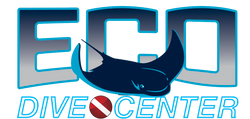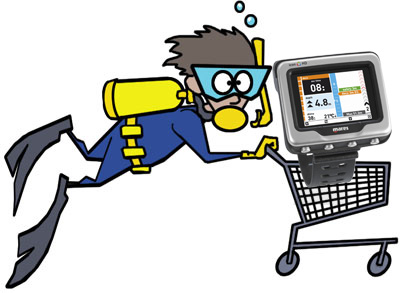Buying Tickets: Each diver must purchase their own ticket online or call 1-888-728-2252 when buying for multipule tickets.
Boarding: Arrive 45 minutes before departure, check-in with divemaster, show certification card and come fully prepared with all equipment.
Cancellation Policy: Zero refund within the 7 days of departure date.
Dive Sites: Sites are to be determined by the Captain's "BEST CONDITIONS CHOICE". Based on water visibility, tide, current, surge, swell and wind.
Hunting: Spear-guns are not allowed. Responsible lobster grabbers ok.
Gratuity: If you like'd the service you received, enjoyed the food and hard work, please tip them.
Equipment: You are responsible for all your own equipment & personal items. Rental gear is not available on-board ships.
Rental: Come fully prepared with all your gear for a fun-filled day of diving. If your need to rent equipment, go to your local dive center the day before.
Waivers: You will receive an email/text with an eWaiver that needs to be completed before boarding.
Minors: Parent or legal guardian need to board ship and complete documents.
Meals: Two meals & snacks. If you have a specialized meal plan, please bring your own.
Seasick? Please purchase motion sickness meds from your local drugstore if needed.
Parking: Free, BUT make sure to rad the signs
Directions: Directions to local dive boats
The Island: Anacapa Island is located approximately 14 miles south of Ventura, California. Anacapa consists of 3 smaller islets, East, Middle, and West Anacapa Islands totaling approximately 1 square mile of land and approximately 5 miles in length. The island itself is encircled by steep sea cliffs that were formed from erosion. Anacapa island is mainly composed of Miocene volcanic rock. In 1980 Anacapa Island became part of the Channel Islands National Park.
Both black and green abalone were once seen here, and an occasional red. If you see any now it will be greens up in shallow, between 5 and 15 feet. Green abalone is distinguished by their greenish salt and pepper mantle. There are reports of black abalone around the island. Black abalone makes their homes in sub tidal water down to 10 feet deep. Their shells are smooth, black or blue in color.
The rocks and ridges are scattered but rise as much as 10 feet from the sand bottom. Kelp is common and healthy but because the reefs are scattered it is rarely impassable. There are some mini-walls and small overhangs creating an excellent environment for all sorts of creatures.
Clinging to the reefs are many invertebrates. Nudibranchs can be found in abundance, especially the bright blue-purple and orange Spanish shawl nudibranch. Chestnut cowries are beautiful and can be found here tucked into the crevices. Normally associated with the tropics, these are the only cowries found in our waters. Their shells are shiny with a rich brown color. An empty fresh shell is a nice prize for your dive but often hard to find.
Fish are abundant here as well but not of the large game fish variety. Observing and photographing small reef fish will keep you busy for the entire dive. Watch for the painted greenling and their mating dance. A female will perch on top a reef and a darker male will dance around and sometimes chase off intruders. Other small reef fish here include kelpfish, ghost gobies, and a variety of blennies.
Cruising over the reef and in the kelp the fish life is no less abundant. Opaleye, some quite large in numbers, pass through the underwater forest late in the afternoon. Garibaldi are not lacking, adding color with their striking orange against the blue-green backdrop. Fellow fish patrolling the kelp include black perch, half-moons, and small sheep head and calico bass.
Lobster, scallops and game fish are few and far between and small so don’t even bother. Maybe a few decades of recovery and we’ll see this area as it once was, abalone and all. But for right now, it is still a great dive.
Popular Sites (weather permitting):
Cathedral cove at Anacapa is a shallow, protected dive spot in the northeast section of the Anacapa's. The main attraction here is the famous Giant Kelp, Garibaldis, and sea lions. This area is also a California state marine reserve, so reef fish are abundant and wise to the laws. The calm waters and shallow depths make it perfect for scuba classes, kayakers, snorkelers and beginner divers out for fun dives. The diving area rarely gets deeper than 25ft. This spot is known for its playful and friendly sea lions and spotted seals. One suggestion for interacting with the sea lions is that they prefer to play out in the sand areas. Swim away from the kelp, in a northwest direction, and within a couple minutes the sea lions will swim by to check you out, especially if you are first off the boat. Depths here will be about 30ft. The left side of the cove (east side) has some small caves, caverns and crevices where you will find lobster, swell sharks and horn sharks. Other species to look for at this dive site include island California Kelpfish, Spotted Kelpfish, Plume Hydroids, Spanish Shawl Nudibranchs, and schooling fish such as Perch, Opaleye, Blacksmith, and Senoritas. One or two large sheephead also patrol the area.
Coral Reef is actually a series of large reefs separated by sand, and covered with brittle stars. There are also small kelp forests in the central, shallower parts of the reef. Coral reef lies off the southwest end of anacapa. The last time I dove here a school of yellowtail swam by me twice, passing very close by. It was my first time seeing yellowtail in California waters in over 350 dives. There are a wide variety of fish here, and even a moray eel can be found here. Coral reef is definitely worth more than 1 dive to explore. And its hard to find a better dive site for photography than here.
Underwater Island (also know as island reef) is one of those hidden gems at Anacapa. It lies at the southwest section of Anacapa, east of Coral reef, just offshore (south) from Channels. Often a dive boat will anchor at Channels, not telling the divers Underwater Island is a short swim away from shore. Currents can pick up out here, so divers should be careful if venturing away from the boat. Often the bow anchor of the boat will be lodged at underwater island. Underwater island is a giant pinnacle rising from 60ft up to 20ft. The south and west edges of the pinnacle are covered with brittle stars. Cabezon, rockfish, black-eyed gobies, baby sheephead, lingcod, and zooanthid anemones populate these areas. Visibility can be 50ft at times, and black sea bass or yellowtail can swim by. Combine the brittle stars with a rockfish, goby, or painted greenling for a great photo op. Baby sheephead populate the red sea fans, but can be very skittish when a camera gets near.
The Peace Dive Boat:
The Peace has everything, a spacious deck, a friendly crew, great food and even a hot tub!!! The Peace is based out of Ventura, California so be sure to plan accordingly when signing up for a trip!
Personal Items: Each diver or passenger should provide his/her own personal items/toiletries for their trip, (i.e., towels, bathing suits, comb, toothbrushes, toothpaste, sunscreen, etc.) Each head contains a shower with a Hair and Body Shampoo dispenser for your convenience. Paper towel and toilet paper dispensers are also provided in each head for your convenience. If you tend to get queasy, don’t forget your seasick medication! The PEACE normally carries a supply of aspirin/ibuprofen, and has a fully stocked first-aid kit in case of emergencies.

























